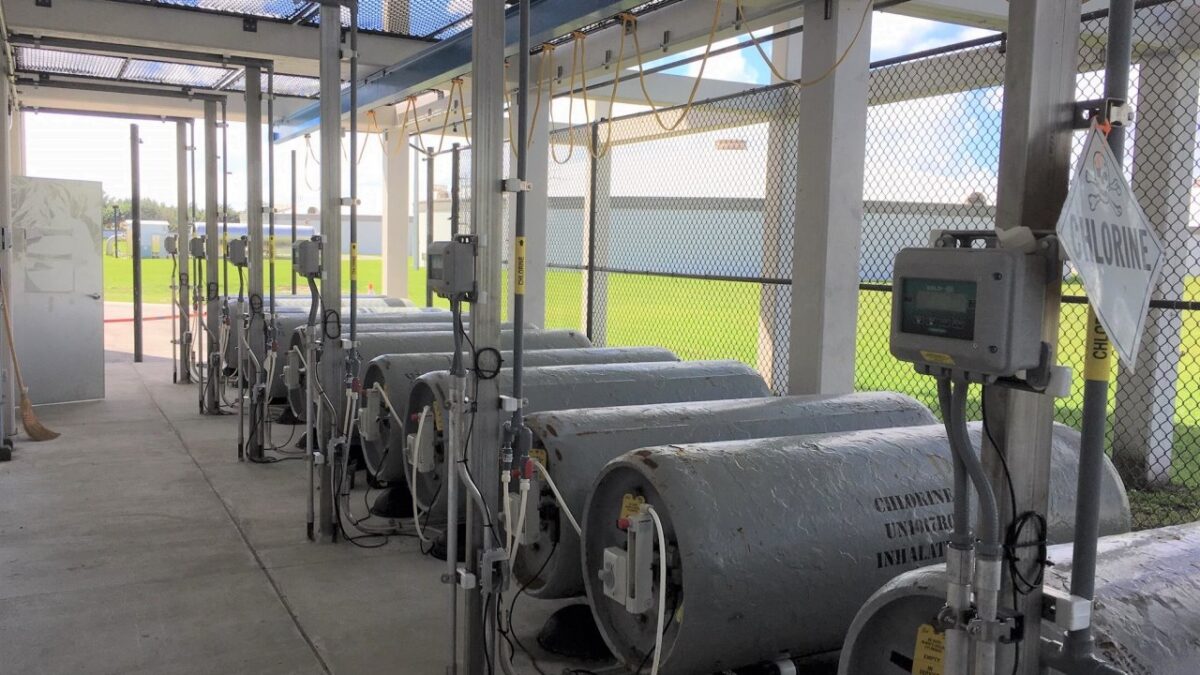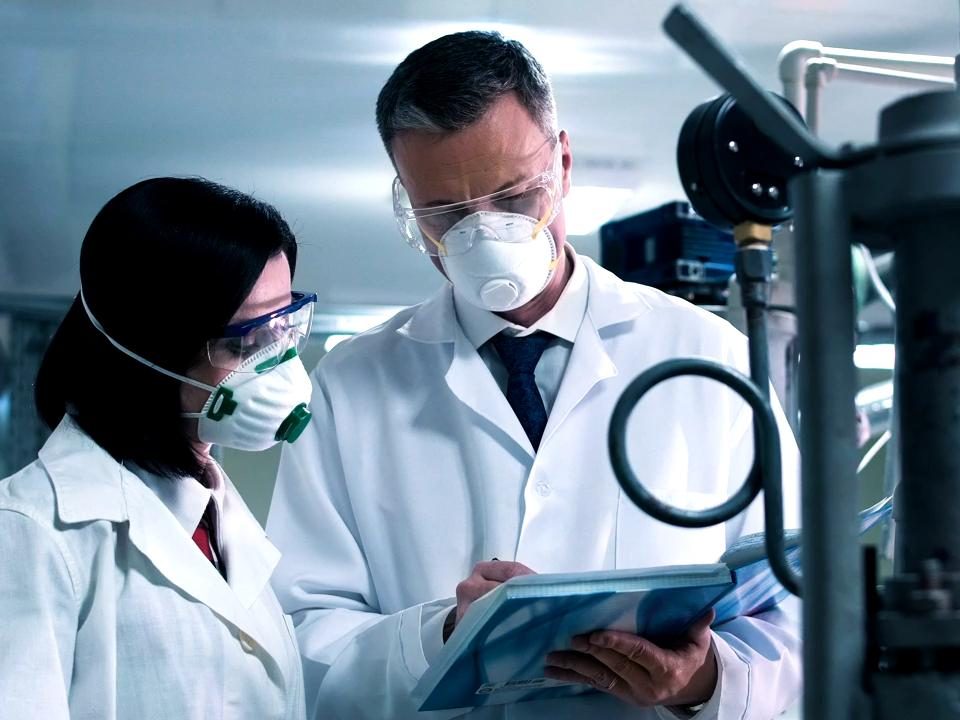Chlorine Storage and Handling: Protecting Lives and the Environment in Indian Process Industries

Strengthening Safety Measures: Understanding the Importance of Following BIS14489 Safety Audit Guidelines in Indian Industries
October 17, 2023
How Safety Perception Survey Lay the Foundation for a Successful BBS Implementation Program
October 18, 2023In this article, we delve into a crucial concern faced by the Indian process industries – chlorine storage and handling. With the potential risks posed by this hazardous chemical, it becomes imperative to not only prioritize the safety of lives but also safeguard our environment. Join us as we shed light on the grave issues surrounding chlorine storage and handling practices in Indian industries. From understanding the dangers to exploring effective solutions, we’re here to equip you with the knowledge and strategies you need. Stay tuned for expert insights and practical tips that promise to protect lives and preserve our precious environment. Be prepared to foster a culture of safety and sustainability in your industry. Together, let’s make a difference!
Introduction
Chlorine, a powerful and versatile chemical, plays a vital role in the Indian process industries. From water treatment and disinfection to the production of plastics and pharmaceuticals, chlorine is an essential component that enables numerous industrial processes. However, its storage and handling pose significant risks to both human lives and the environment. In this comprehensive article, we will delve into the critical topic of Chlorine Storage and Handling in Indian Process Industries. We will explore the potential hazards associated with chlorine, examine the existing regulatory framework in India, discuss strategies for designing safe storage systems, highlight best practices for handling chlorine, and emphasize the importance of environmental considerations
Importance of Chlorine in Indian Process Industries
The use of chlorine in Indian process industries plays a pivotal role in various sectors, making it an indispensable chemical compound. From water treatment plants to textile manufacturing, chlorine serves as a powerful disinfectant and bleaching agent, ensuring the production of high-quality goods. Additionally, it is extensively used in the pharmaceutical industry for the synthesis of essential drugs and in the production of PVC, a widely utilized building material.Emphasizing its significance further, chlorine contributes to public health by purifying drinking water and preventing the spread of waterborne diseases. It acts as a potent sterilizer, eliminating harmful microorganisms and providing safe drinking water to millions across India. Moreover, chlorine’s application extends beyond water treatment as it aids in maintaining hygiene standards by sanitizing swimming pools and spas.
While acknowledging the vital role played by chlorine within Indian process industries, it is crucial to ensure its safe storage and handling practices. By implementing stringent safety measures and adhering to regulatory guidelines, we can safeguard both human lives and the environment from potential risks associated with this powerful chemical compound. Such proactive measures will not only protect workers but also bolster confidence among consumers that industries prioritize their well-being while delivering essential products and services.
Risks and Hazards Associated with Chlorine Storage and Handling
Risks and Hazards Associated with Chlorine Storage and Handling:Chlorine, a highly reactive and toxic gas, poses several risks and hazards during storage and handling processes. Firstly, the release of chlorine gas can cause severe respiratory distress and even be fatal to humans and animals. Furthermore, in the event of a leak or accidental release, chlorine gas can form an explosive mixture when combined with certain substances present in the environment.
Moreover, chlorine is highly corrosive to most metals, which increases the risk of equipment failure or structural damage if proper precautions are not taken. The presence of moisture or water can accelerate corrosion, resulting in leaks or ruptures in storage containers or pipelines. Additionally, exposure to chlorine gas can lead to chemical burns on the skin and eyes.
To mitigate these risks, it is crucial to implement stringent safety protocols throughout the entire lifecycle of chlorine storage and handling. This includes proper ventilation systems to prevent the accumulation of hazardous vapors, regular maintenance checks for containers and pipelines to identify any signs of degradation or leakage promptly, as well as implementing comprehensive emergency response plans that ensure swift action in case of accidents.
By adhering to these safety measures and promoting a culture of continuous improvement in process industries across India, we can effectively minimize the risks associated with chlorine storage and handling. Through diligent implementation of best practices alongside robust regulatory frameworks, we have the power to create safer working environments that prioritize both human safety and environmental preservation.
Regulatory Framework for Chlorine Storage and Handling in India
Regulatory Framework for Chlorine Storage and Handling in India:India’s commitment to industrial safety is exemplified through the comprehensive regulatory framework established for the storage and handling of chlorine within its process industries. The Ministry of Environment, Forest and Climate Change (MoEFCC), in collaboration with various regulatory bodies, has set stringent guidelines to mitigate risks associated with chlorine usage.
The Hazardous Chemicals Rules 2020, under the Environment (Protection) Act, 1986, specifically address the safe storage and handling of chlorine. These rules outline requirements for site selection, infrastructure standards, emergency plans, and risk assessment procedures. Furthermore, the Occupational Safety and Health Administration (OSHA) guidelines provide additional guidance on ensuring worker safety during chlorine operations.
To enforce these regulations effectively, India has established competent authorities such as the Central Pollution Control Board (CPCB), State Pollution Control Boards (SPCBs), and Factory Inspectorates at a state level. These bodies conduct regular inspections to ensure compliance with safety standards. In cases of non-compliance or any potential threat to public safety or the environment, swift action is taken to rectify issues and impose penalties if necessary.
The proactive approach taken by Indian regulators emphasizes continuous improvement in safety practices within process industries. This commitment inspires confidence among stakeholders that every effort is being made to protect lives and safeguard the environment from potential hazards associated with chlorine storage and handling operations. By fostering a culture of compliance through robust regulations and strict enforcement mechanisms, India is paving the way for sustainable growth while prioritizing human well-being.
Designing a Safe Chlorine Storage and Handling System
Designing a Safe Chlorine Storage and Handling System:A secure and efficient chlorine storage and handling system is vital to ensure the well-being of workers and the surrounding environment. When designing such a system, several key considerations come into play. First and foremost, selecting appropriate storage containers is crucial. Reinforced steel cylinders, resistant to corrosion and able to withstand high pressure, are often employed.
Next, the location of the storage facility must be meticulously planned. It should be situated away from densely populated areas, water bodies, and sources of ignition. Implementing proper ventilation systems within the facility is imperative to prevent the accumulation of chlorine gas in case of any leaks or spills.
Additionally, an effective monitoring system should be established to detect any abnormalities in chlorine levels or potential leaks promptly. This can include automated sensors coupled with alarms that alert personnel in real-time, allowing them to take immediate action.
By following these guidelines during the design phase, a safe chlorine storage and handling system can be created that minimizes risks while ensuring smooth operations within Indian process industries. With proper implementation and adherence to safety protocols, workers can carry out their tasks confidently while safeguarding both their lives and the environment they operate in.
Training and Education for Personnel Involved in Chlorine Handling
Training and Education for Personnel Involved in Chlorine Handling:Personnel involved in chlorine handling play a crucial role in ensuring safety and minimizing risks associated with this highly reactive chemical. Training programs should be comprehensive, covering theoretical knowledge and practical skills necessary for safe chlorine handling. These programs should emphasize the importance of following standard operating procedures (SOPs) and adhering to safety guidelines at all times.
Training sessions can include modules on understanding the properties of chlorine, identifying hazards, emergency response procedures, and proper use of personal protective equipment (PPE). Hands-on exercises can simulate scenarios to enhance decision-making skills during critical situations. Regular refresher courses should be conducted to reinforce knowledge and keep personnel updated on new safety practices.
Investing in training and education not only enhances the competency of personnel but also boosts their confidence in handling chlorine safely. When employees feel empowered with knowledge, they are more likely to prioritize safety precautions, leading to a reduction in accidents. By prioritizing the professional development of personnel involved in chlorine handling, industries can cultivate a culture of safety where everyone is committed to protecting lives and preserving the environment.
Remember: A well-trained workforce is an invaluable asset that ensures smooth operations while safeguarding both human lives and the planet we call home.
Personal Protective Equipment (PPE) for Chlorine Handling
Personal Protective Equipment (PPE) for Chlorine Handling:Ensuring the safety of personnel working with chlorine is paramount in any process industry. Personal Protective Equipment (PPE) plays a crucial role in minimizing the risks associated with chlorine handling. A comprehensive PPE ensemble includes a full-face respirator with a chemical cartridge, chemical-resistant gloves, coveralls made of impermeable material, and chemical-resistant boots.
The full-face respirator provides respiratory protection by filtering out chlorine gas and preventing its inhalation. The chemical cartridge efficiently absorbs and neutralizes chlorine fumes, ensuring clean air supply to the wearer. Chemical-resistant gloves act as a barrier between the skin and chlorine, protecting against potential burns or corrosive effects.
Coveralls made of impermeable material serve as an additional layer of defense against accidental contact with liquid chlorine. These suits are designed to resist penetration and provide comfort during extended periods of use. Similarly, chemical-resistant boots prevent any direct contact with spilled or leaked chlorine on the ground, reducing the risk of foot injuries.
By investing in high-quality PPE and ensuring its proper usage and maintenance, process industries demonstrate their commitment to safeguarding their employees’ well-being. Providing workers with reliable protective gear not only protects lives but also fosters a sense of security among personnel, creating a positive work environment where individuals can perform their duties confidently and productively.
Emergency Preparedness and Response for Chlorine Accidents
Emergency Preparedness and Response for Chlorine Accidents:In the event of a chlorine accident, swift and effective emergency response is crucial to minimize the potential harm to human life and the environment. Proactive measures must be in place to ensure that any incident involving chlorine is handled efficiently and safely. This section will delve into the key aspects of emergency preparedness and response for chlorine accidents.
When a chlorine release occurs, immediate action should be taken to alert all personnel in the vicinity, evacuate the affected area, and establish a command center. Trained emergency response teams equipped with appropriate personal protective equipment (PPE) should swiftly assess the situation while prioritizing safety. Promptly initiating containment measures, such as isolating the leak source or shutting down chlorine supply lines, can significantly mitigate the extent of damage.
Furthermore, an effective communication system is vital during emergencies. Clear protocols for reporting incidents should be established within organizations handling chlorine to ensure rapid notification of local authorities, emergency services, neighboring industries, and affected communities. Regular drills and exercises must be conducted to enhance coordination among all stakeholders involved in emergency response efforts.
By prioritizing preparedness through comprehensive training programs, robust contingency plans, and regular drills, Indian process industries can effectively respond to chlorine accidents with efficiency and expertise. Such proactive measures not only protect lives but also minimize environmental impacts associated with accidental releases of this hazardous chemical. Emphasizing safety at every stage ensures that Indian industries are well-prepared in their commitment towards secure operations.
Best Practices for Chlorine Storage and Handling
Best Practices for Chlorine Storage and Handling:Ensuring the safe storage and handling of chlorine is crucial in preventing accidents and protecting both lives and the environment. Implementing best practices can significantly minimize risks associated with this hazardous substance.
One essential best practice is to have a designated storage area exclusively for chlorine, separate from other chemicals. This area should be well-ventilated, properly secured, and equipped with leak detection systems to promptly identify any potential leaks or releases. Regular inspections and maintenance of storage containers are imperative to ensure their integrity.
Additionally, it is crucial to establish thorough procedures for handling chlorine, including guidelines on proper dosing techniques, correct use of personal protective equipment (PPE), and protocols for emergency response. Training programs should be implemented to educate personnel on these procedures, emphasizing the importance of adherence to safety protocols at all times.
To further enhance safety measures, regular safety audits should be conducted to assess compliance with best practices in chlorine storage and handling. Such audits can identify potential weaknesses in existing systems and provide an opportunity for continuous improvement.
By strictly adhering to these best practices, Indian process industries can significantly reduce the likelihood of accidents involving chlorine while also safeguarding the environment. With a strong focus on safety measures continuously implemented, industries can achieve a safer working environment that fosters confidence among workers while demonstrating a commitment to sustainability.
Environmental Considerations in Chlorine Storage and Handling
The well-being of our environment is a paramount concern when it comes to chlorine storage and handling in Indian process industries. The release of chlorine gas or its improper disposal can have severe consequences on air, water, and soil quality. Therefore, it is imperative for industries to adopt environmentally-friendly practices that minimize the impact of chlorine operations.One effective approach is to implement stringent containment systems that prevent leaks and spills. This includes utilizing robust storage tanks made from corrosion-resistant materials and implementing regular maintenance checks to ensure their integrity. Additionally, employing advanced monitoring technologies such as gas detection systems can promptly identify any potential leaks, enabling swift action before they escalate into environmental hazards.
Moreover, considering alternative disinfection methods can significantly reduce the environmental footprint associated with chlorine use. Exploring greener alternatives like ultraviolet (UV) disinfection or ozone treatment can provide equally effective results while minimizing the risks posed by chlorine. Embracing these eco-friendly alternatives not only safeguards our environment but also showcases a commitment towards sustainable practices within the industry.
By prioritizing environmental considerations in chlorine storage and handling processes, Indian process industries are taking significant strides towards a greener future. Through responsible practices and innovative solutions, we can ensure that our ecosystems remain protected while maintaining industrial progress
Case Studies: Success Stories in Chlorine Safety Implementation
In the realm of Chlorine safety implementation, several remarkable success stories have emerged from Indian process industries. One such case involves a chemical plant in Gujarat that revamped its entire chlorine storage and handling system. By adopting state-of-the-art technology and implementing rigorous safety protocols, they achieved an exemplary track record of zero accidents over the past five years. This achievement not only safeguards the lives of workers but also protects the surrounding environment from potential disasters.Another inspiring success story comes from a pharmaceutical company in Maharashtra that prioritized employee training and education on chlorine safety. They organized regular workshops, seminars, and mock drills to enhance awareness and preparedness among their workforce. As a result, this proactive approach led to a significant reduction in incidents related to chlorine mishandling. The company’s commitment to continuous improvement has created an optimistic atmosphere where employees feel confident in their ability to handle chlorine safely.
Furthermore, an agrochemical plant in Tamil Nadu implemented stringent environmental practices alongside their focus on chlorine safety. They invested in advanced pollution control technologies and established waste management systems that comply with international standards. Consequently, this facility not only ensures the well-being of its workers but also demonstrates a commendable commitment to preserving the environment for future generations.
These success stories serve as beacons of inspiration for other Indian process industries striving towards excellence in chlorine storage and handling practices. By replicating these achievements through dedication, innovation, and adherence to regulatory frameworks, companies can play a vital role in protecting lives and preserving our precious ecosystems.
Conclusion
In conclusion, the management and safe handling of chlorine in Indian process industries is of paramount importance. By adhering to rigorous regulatory frameworks, implementing proper storage and handling systems, providing comprehensive training for personnel, and promoting environmental considerations, we can ensure the protection of lives and the preservation of our precious ecosystem. The success stories shared in this article exemplify the transformative power of proactive measures taken by industry leaders. As we move forward, let us embrace a future where chlorine storage and handling practices become synonymous with safety and sustainability. Together, we can create a world where industrial processes harmoniously coexist with human well-being and environmental stewardship.




